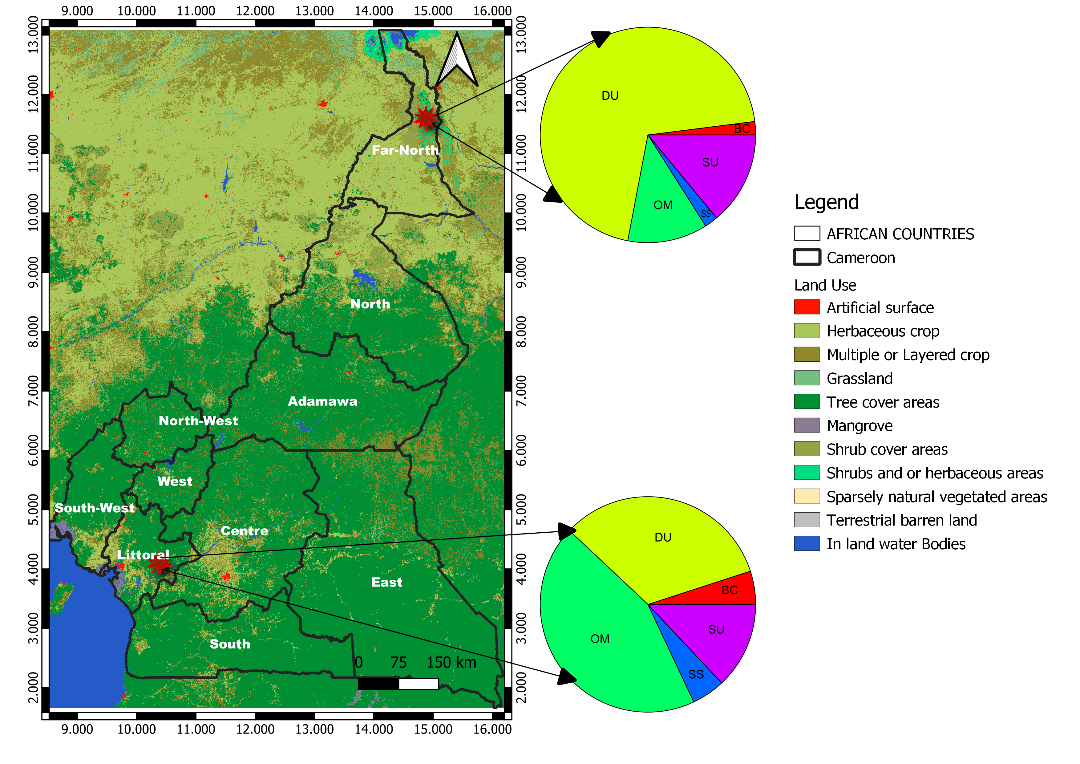Bivariate and Partial Wavelet Coherence analysis of aerosols impact on Global Horizontal Irradiation in Far-North and Littoral regions of Cameroon
Keywords:
Irradiation, Biwavelet, Partial wavelet coherence, Aerosols, CameroonAbstract
This study investigated the time-frequency variability of Global Horizontal Irradiation (GHI) under clear sky conditions in Cameroon in relation to aerosol types using the wavelet transform method. For this purpose, we focused on two climatically different zones (Far North and Littoral) in Cameroon chosen because of the large difference in term of proportion in type of aerosols. From the Bivariate Wavelet Coherence (BWC) analysis, it was found in the Littoral zone (Dust DU, Organic Matter OM, Black Carbon BC, Sulfates SU) aerosols are negatively correlated with GHI at all frequencies, whereas Sea Salt (SS) aerosols are positively correlated with GHI. In the Far North zone, all aerosols are negatively correlated with GHI in the 0-8 month band but the dynamic has changed in the 8-16 month band. However, with the Partial Wavelet Coherence (PWC) analysis, we found that the correlations between GHI and each analyzed variable decreased after removing the effects of the remaining variables. Only the correlations between GHI and DU are still significant, with an average wavelet coherence (AWC) and percentage of significant coherence (PASC) values of 0.60 and 24.36% respectively. It is noteworthy with PWC analysis that the area with significant correlation between GHI and the other aerosol types except DU is very limited. This shows that their influences on GHI have already been covered by DU. The study also showed the combined effect of the analyzing variables (SS, BC, SU and OM) on GHI, since, independently as shown by the PWC, each of them is weakly correlated to GHI. However, with the BWC, the combined effect of other aerosols on BC and SU makes their influences on GHI important. The PWC and BWC implementations have been compiled by Matlab and can be accessed freely following this link (https://figshare.com/s/bc97956f43fe5734c784).

Published
How to Cite
Issue
Section
Copyright (c) 2023 Yaulande Douanla Alotse, Mamadou Ossénatou, Dembele André, Lenouo André

This work is licensed under a Creative Commons Attribution 4.0 International License.







